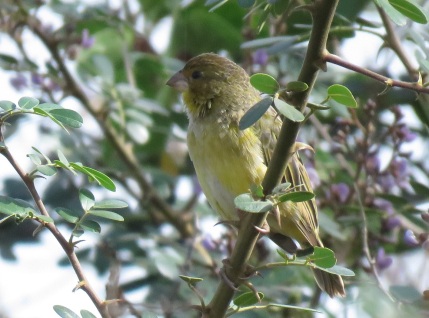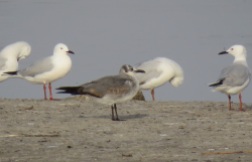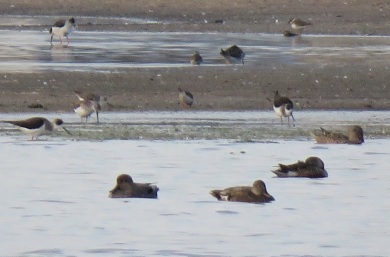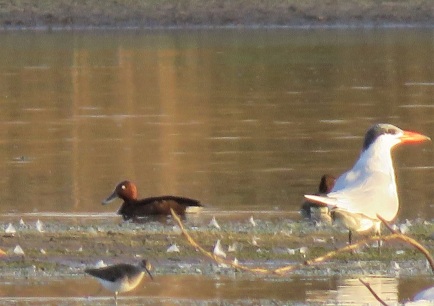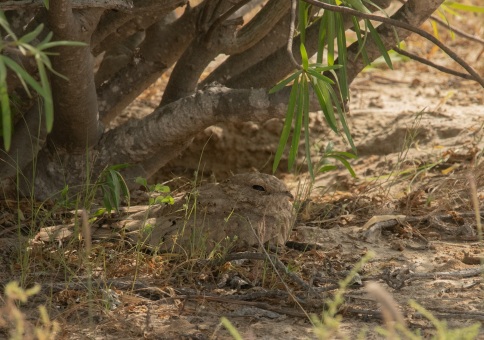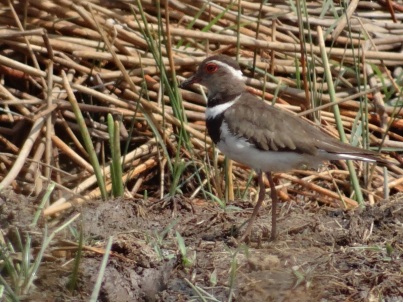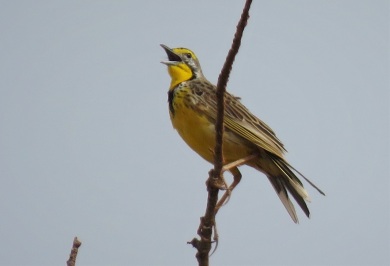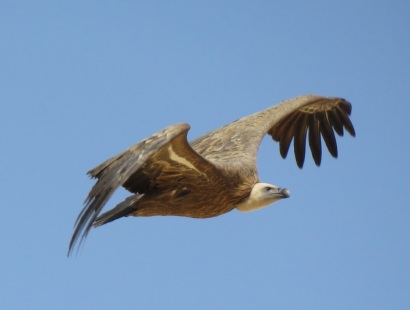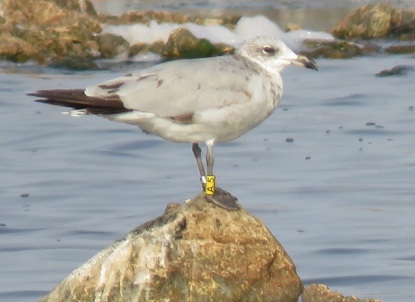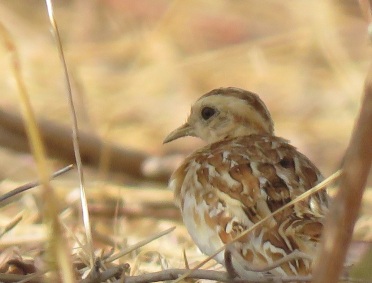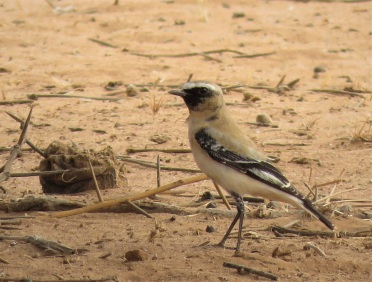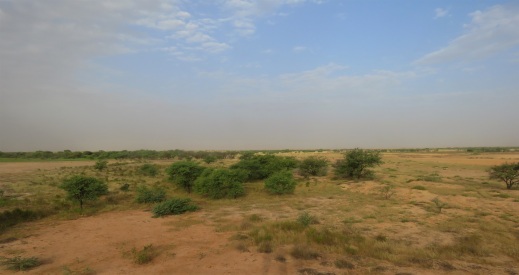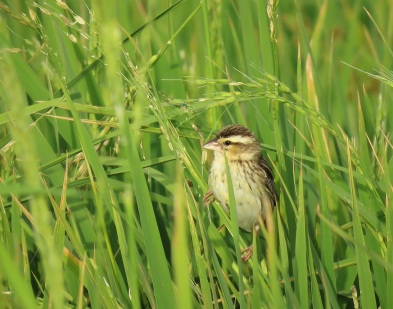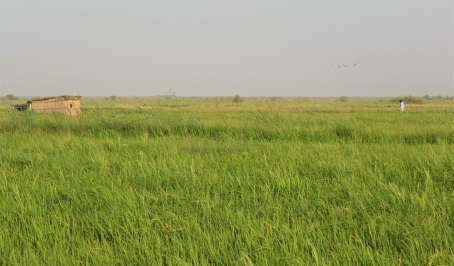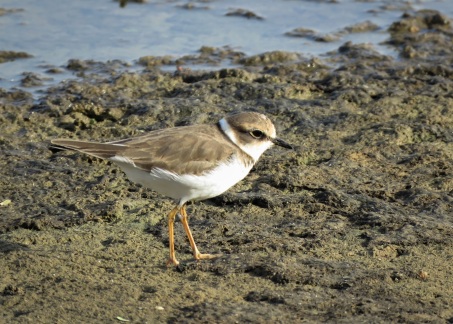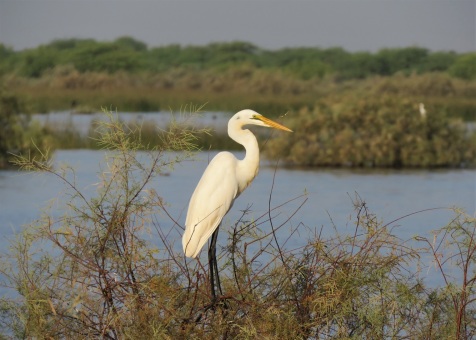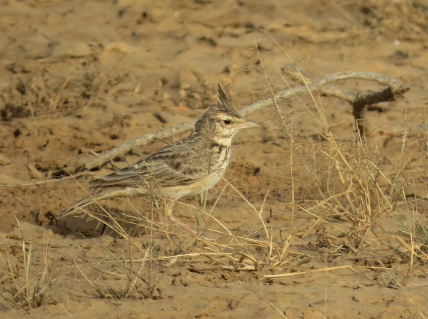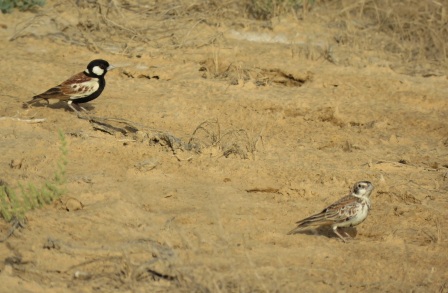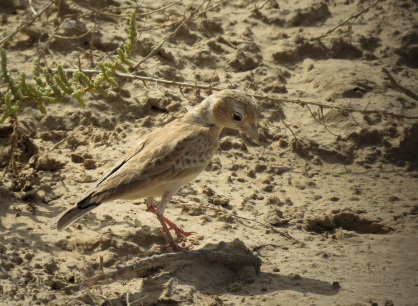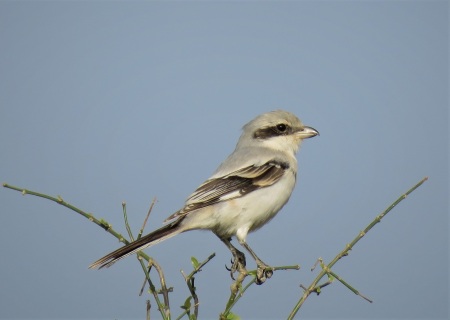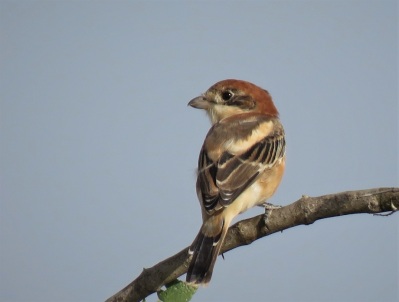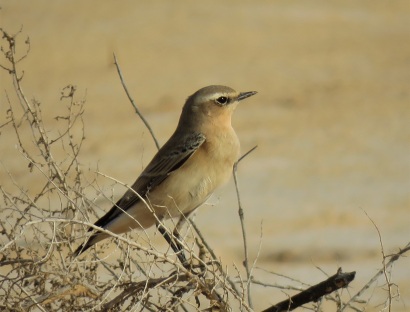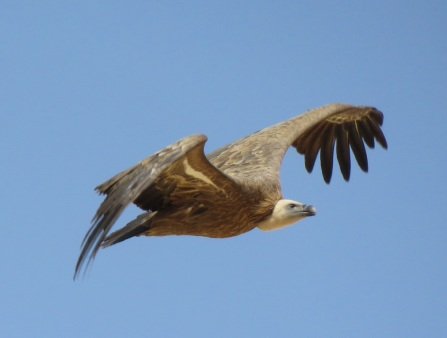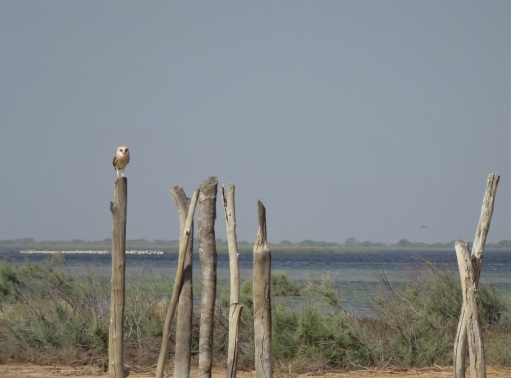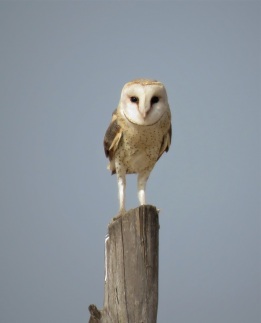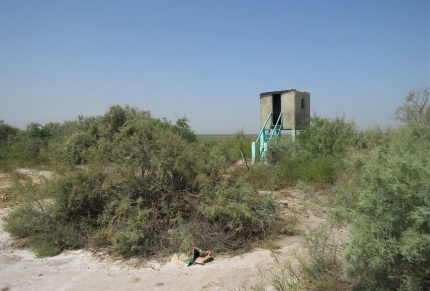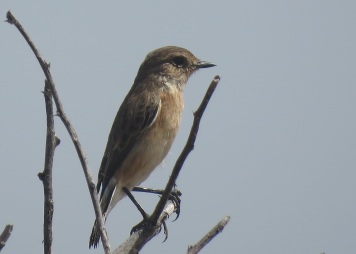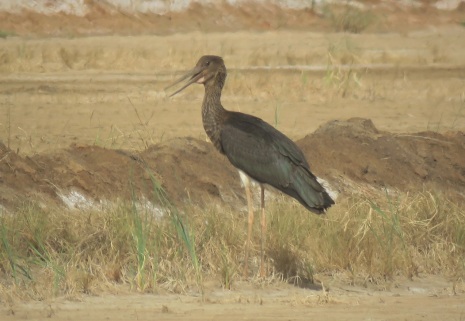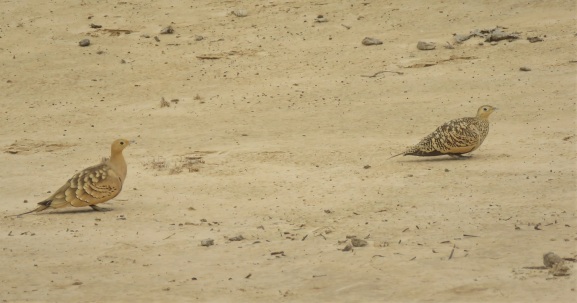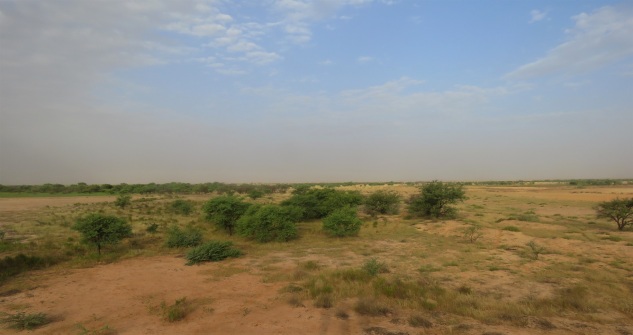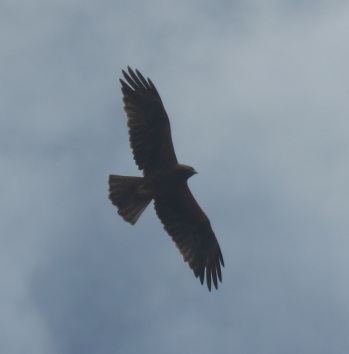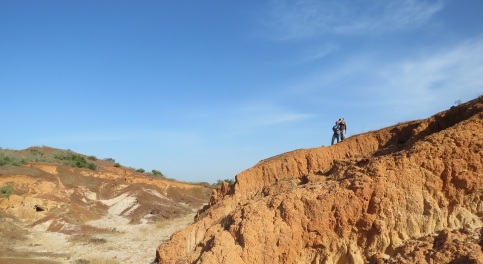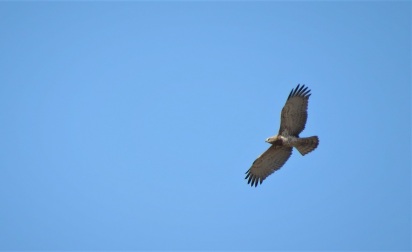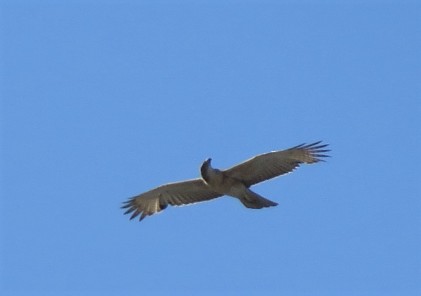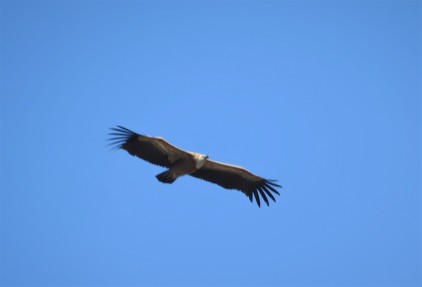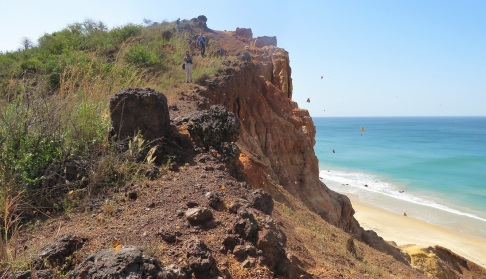Year in review: 2019
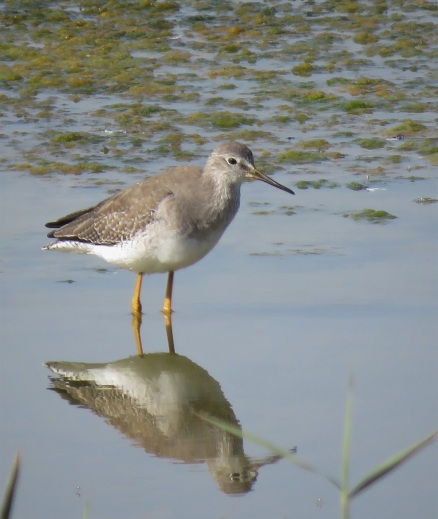
As is now a bit of a tradition on these pages, I’m again compiling a review of last year’s main birding events. Senegal’s bird year 2019 was a pretty good one, with the usual decent mix of new discoveries, rare vagrants, scarce migrants, range extensions and new breeding records.
First things first: last year saw the addition of two new species to the country’s avifauna, so rather similar to previous years – on average, there have been two additions per year during 2014-2018. First a Willcock’s Honeyguide in Dindefelo nature reserve found by Nik Borrow and his group in January, then the discovery of a small group of Cuckoo Finches at Kagnout in Casamance, in February by Bruno Bargain, Gabriel Caucal and Adrien de Montaudouin. As predicted back in 2018, both Dindefelo and Casamance are obviously key areas for finding new birds in the country. Both species are known to occur in neighbouring countries so these additions are not too much of a surprise, and will likely show up again in Senegal in coming years. These “firsts” bring the total number of species confirmed to occur in Senegal to 674, with seven additional species listed as requiring confirmation. The full checklist as per IOC taxonomy (v.8.1) may be found here.
Next up, the usual lot of vagrants: from North America, the now annual American Golden Plovers (Palmarin in April, and Yene in December), the country’s fourth Pectoral Sandpiper at Lac Mbeubeusse on 5.10, and a Lesser Yellowlegs wintering at Technopole – apparently the longest stay recorded in Africa (at least 71 days!), and most likely the same bird seen several years in a row now. Two Laughing Gulls that were present at Technopole in April-May – an adult in breeding plumage and a first-summer bird – were the 6th and 7th records; the immature was also seen at Ngor on 22.5. Also at Technopole were at least two different Franklin’s Gulls, one in January and two in April-May including an adult displaying to other gulls. A Lesser Jacana was found by Vieux Ngom on 16.3 on the Lampsar, while a Spotted Creeper on 17.12 at Kamobeul (Ziguinchor) was another rarely recorded Afro-tropical vagrant. And finally from Europe, a Little Gull – possibly not a true vagrant but rather a very scarce winter visitor – was seen on 8.3 at Ngor, and a European Golden Plover was at Saloulou island (Casamance) on 25.2.
Scarce migrants included a few species of ducks that are rarely reported from Senegal, starting with these three Gadwalls found by Simon Cavaillès at Technopole in January, which were probably the same birds as those seen in December 2018 in The Gambia. A Eurasian Wigeon was present at the same time; while the latter is regular in the Djoudj, both ducks were apparently seen for the first time in the Dakar region.
Almost a year later this pair of Ferruginous Ducks on a small dam at Pointe Sarène near Mbour on 24.12 were a real surprise in this location. Apparently they didn’t stick around: earlier today (19.1.20) I had the chance to visit the dam again but no sign of our two Palearctic ducks…
An African Crake found by Miguel Lecoq in a dry river bed at Popenguine NR on 12.7 was highly unusual. The two Short-eared Owls at Technopole in January (with one still here on 11.2) were possibly returning birds from the 2017-18 influx as they roosted in exactly the same location; another bird was found in the Djoudj on 26.12 by Vieux and Frank Rheindt. Perhaps more unexpected was a Marsh Owl that was actively migrating at Ngor on 8.10, coming from the north out at sea, but even more spectacular was the discovery of an Egyptian Nightjar by Frédéric Bacuez on his local patch at Trois-Marigots, on 23.10 (an early date and first in this location); in the Djoudj NP, a somewhat classic location for the species, three birds were seen several times from 23.11 up to mid December at least.
A few Red-footed Boobies were again seen at Ngor: an adult on 3.7 and likely the same bird again on 22.7, then daily from 9-12.8 (with two here on 17.8), and again an imm. seen twice in November. These are the 5th to 7th records, a remarkable presence given that the first record was in October 2016 only! As usual, several Brown Boobies were seen as well but we didn’t get the chance to properly check on the birds at Iles de la Madeleine this past year. Other scarce seabirds seen from Ngor were a Balearic Shearwater (18.11), a Bulwer’s Petrel (5.12), several Leach’s Storm-Petrels (11 & 13.11), and some 30 Barolo’s/Boyd’s Shearwaters that passed through in August and September. A Baltic Gull (fuscus Lesser Black-backed Gull) at Technopole 27.1 was our first record here.
Quite a few birds were reported for the first time from Casamance by Bruno and friends, and several resident forest species that had not been seen in many years were “rediscovered” this past year, such as Black-shouldered Nightjar, Black Sparrowhawk, White-throated and Slender-billed Greenbuls, Flappet Lark, Red-faced and Dorst’s Cisticolas – the online Casamance atlast can be found here. Several Senegal Lapwings were again seen towards the end of the rains, and a Forbes’s Plover at Kagnout on 17.2 was definitely a good record as the species had previously been reported only on a few occasions from the Niokolo-Koba NP.
A Brown-throated (= Plain) Martin feeding over the lagoon at Technopole on 28.4 was a first for Dakar; this species is rarely seen in Senegal it seems. A few Moltoni’s Warblers were reported in autumn including at least one on 20.10 at Mboro, where Miguel also noted several northward range extensions such as Fine-spotted Woodpecker, Grey Kestrel, Splendid Sunbird, and Orange-cheeked Waxbill. The observation of two Mottled Spinetails some 15km south of Potou (Louga region) is the northernmost so far and seems to confirm the presence in this part of the country, following one in the same region in January 2018. A pair of Little Grey Woodpeckers at Lompoul and the discovery of Cricket Warbler in the Gossas area (Diourbel) are also noteworthy as they are just outside known distribution ranges for these two Sahelian species. More significant is the observation of a Long-billed Pipit on the Dande plateau near Dindefelo on 9.2, as this is the first record away from the Djoudj area, raising the possibility that the species is breeding in the vicinity.
Additional good records for the Dakar region included a White-throated Bee-eater on 12.8, a Red-breasted Swallow near Diamniadio on 11.10 and Grasshopper Warblers at Yene lagoon on 8 & 15.12, as well as at Lac Tanma (Thiès region) on 27.10 – and more surprisingly, one was found aboard a sail boat some “400 Miles South West Of Dakar” on 13.9. Last year we documented oversummering of Yellow-legged and Mediterranean Gulls on the peninsula.
We also continued our modest efforts to survey breeding Black-winged Stilts at several sites in Dakar, Ziguinchor and Saint-Louis; the findings of these should be formally published later this year. The Horus Swift colony was visited on several occasions (Jan.-March and Nov.-Dec.) with further evidence of breeding. A pair of Tawny Eagles at their nest site on a high tension pylon near Ndioum, where they are known since at least 2015, were seen again in December by Frédéric and Jérémy. Yellow-throated Longclaw was found to be breeding at lac Mbeubeusse and probably at lac Rose as well: more on the species in this post.
In July we found several additional pairs of Turati’s Boubou right on the border with Guinea-Bissau, a bit further to the south of the site where Bruno initially found the species, in October 2018 near Ziguinchor. Also in Casamance, breeding was confirmed for Common Buttonquail, Golden-tailed Woodpecker, and a whole range of other species.
Another noteworthy record is that of a group of 113 Eurasian Griffons in the Djoudj NP on 2.11 – apparently the largest flock ever recorded in Senegal! This surely reflects the general increase in numbers of what used to be a rather scarce species it seems – read up more on the status of this vulture in Senegal in this post on Ornithondar.
As usual, a few interesting ring recoveries were obtained, including several returning birds, providing further evidence for site fidelity and local movements between key sites for e.g. Black-tailed Godwits and Ospreys of course, but also for a Eurasian Spoonbill from Spain – more on this in a future post. A Gull-billed Tern from the Neufelderkoog colony in northern Germany was also a good recovery, just like the many Sandwich Terns that we managed to read at Technopole in April-May with birds originating from Ireland, the UK, the Netherlands and Italy! Also of note were a French Black-headed Gull, the first colour-ringed Greenshank and wing-tagged Marsh Harrier in our ever-growing database, and last but not least the first recovery of a Croatian-ringed bird in Senegal, an Audouin’s Gull seen at three sites in Dakar in January and February.
During 2019 I was fortunate to continue our regular coverage of Technopole but also for the third consecutive year of seabird migration at Ngor, and managed a few trips further afield: the northern Saloum delta (Simal, Palmarin), three trips to Casamance (January, May, July), the Petite Côte (at long last explored the lagoons at Mbodiene!), the Langue de Barbarie and Trois-Marigots in April, the Djoudj and other parts of the lower Senegal valley (November), and finally Toubacouta in December. Oh and a memorable day trip on a successful quest for the enigmatic Quail-Plover!
Other blog posts this past year covered the status and distribution (and a bit of identification!) of Seebohm’s Wheatear, Iberian Chiffchaff, and Western Square-tailed Drongo.
Another series focused on recent ornithological publications relevant for Senegal, in three parts. I’m not sure how I managed but in the end I was involved in quite a few articles published in 2019: the autumn migration of seabirds at Ngor and the status of Iberian Chiffchaff in West Africa (the latter with Paul Isenmann and Stuart Sharp) in Alauda, the first records of Eurasian Collared Dove and of Turati’s Boubou in Senegal (the latter with Bruno Bargain) published in Malimbus, and finally two papers in the Bulletin of the African Bird Club: a short piece on the hybrid shrike from lac Tanma in 2017 (with Gabriel Caucanas), and a review of the status of the Short-eared Owl in West Africa, following the influx during winter 2017/18.
Many thanks to all visiting and (semi-)resident birders who shared their observations through eBird or other channels, particularly Miguel, Frédéric and Bruno. The above review is of course incomplete and probably a bit biased towards the Dakar region: any additions are more than welcome and will be incorporated!
Popenguine Raptor Fest (3.11.18)
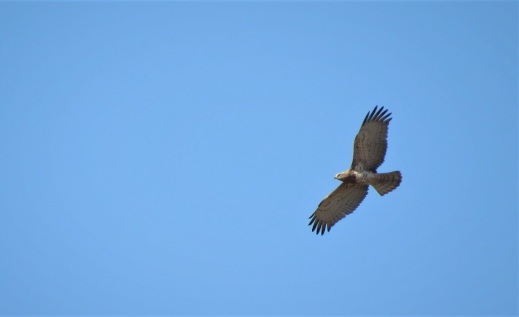
A visit to Popenguine nature reserve a couple of weeks ago quickly turned into a exciting few hours watching a good variety of raptors – something we’re not much used to in this part of Senegal, where there are few sites that are good for raptors, and most of the time anything else than a Yellow-billed Kite, Osprey or Hooded Vulture will qualify as a good record. Here’s a short overview, in order of appearance!
As always, several Ospreys were to be seen in the reserve; a few birds usually spend the night on the mighty baobabs that dot the Popenguine savanna, and all day long Ospreys can be seen flying around the cliffs or fishing out at sea. Later that same day at the lagoon just south of Toubab Dialaw, we had a good count of some 29 birds, all visible at the same time (Balbuzard). Popenguine of course also had a few Yellow-billed Kites patrolling the area (Milan à bec jaune).
As we were looking for a Common Rock Thrush we’d briefly spotted on a ridge ahead of the footpath, we noticed first an immature Peregrine Falcon flying around, then a European Hobby – the latter a scarce migrant through Senegal so always a good find. Hobby was already seen at Popenguine around the same time last year by Miguel. This time round it looked like it was an actively migrating individual, just like a Common Kestrel that briefly made an appearance shortly after (Faucons pèlerin, hobereau et crécerelle).
Next up was a Marsh Harrier circling in the distance, again probably a bird on its way to wintering grounds further south (Busard des roseaux). I’ve always thought that Popenguine would be a fairly strategic site to look for actively migrating raptors and other birds. Should be interesting to spend a few days here in October-November and February-March!
This Short-toed Eagle on the other hand was probably one of the 2-3 birds that typically spend the winter in the area around Popenguine and Guereo.
Far less expected than the previous species was an African Hawk-Eagle, spotted by Gabriel as it arrived from the north-east and made its way towards the cliffs, at one point circling together with a couple of Ospreys. Initially we weren’t quite sure about its identity and tentatively id’d this bird as a Bonelli’s Eagle, wondering whether a juvenile African Hawk-Eagle could be ruled out, and were a bit puzzled by the very pale appearance of this eagle. Luckily I managed a few record shots, a bit distant and hazy but they should do the trick. The plumage seemed to still be within the variation of worn juvenile Bonelli’s Eagle, but moult should not start until the second year and this bird shows clear moult contrast on with fresh inner primaries growing. Simon was the first to point out, after this post was originally published, that it looked more like African Hawk-Eagle. I eventually sent out the picture for comments, and Dick Forsman kindly responded, confirming that it’s an African Hawk-Eagle: “It is overall lighter below, the juvenile remiges (primaries + secondaries) are too light and too poorly barred below for a juv. Bonelli’s and the replaced inner primary shows just a dark tip without any further barring. Note also the translucent primaries in the images with blue sky, another pro-spilogaster feature.” Thanks Dick! (post updated Dec. 27)
African Hawk-Eagle is reasonable common it seems through the southern half of Senegal, and is a classic sighting e.g. in the Niokolo-Koba area. There are some records from the Saloum delta and even from the middle Senegal valley (as per Morel & Morel and Sauvage & Rodwell), but as far as I know this is the first from the Petite Côte.
I’m still hoping to see Bonelli’s Eagle one day in the Djoudj, Trois-Marigots or elsewhere in the Senegal valley, the only area with more or less regular records in winter (mainly by Frédéric, who year after year has documented the presence of a few birds around Saint Louis and who nicely summarised the current knowledge about this scarce species in West Africa, in this post on Ornithondar).
After we’d reached the top of the cliffs, next up was this Eurasian Griffon which appeared to be actively migrating along the coastline, just like a second bird we’d see a couple of hours later that same morning near Yène.
Barely a few minutes later, Gabriel strikes again with a young Lanner making a brief appearance, just as we were heading back towards the reserve entrance (Faucon lanier). That’s four species of falcons, not bad! In previous years we’ve also had Barbary Falcon near the cliffs, and surely Red-necked Falcon and Grey Kestrel must also occur at least occasionally, while in the wet season it may be possible to encounter African Hobby.
We thought we’d seen pretty much everything when at the last minute a Shikra was seen dashing over the pond (all but dry!), bringing our morning’s total to 11 birds of prey.
Besides all these hooked beaks, as always the nature reserve held quite a few other good bird, such as Gosling’s Bunting, Green-winged Pytillia, Sahel Paradise-Whydah, Blue Rock Thrush, and Northern Anteater Chat. In the end we saw two different Common (=Rufous-tailed) Rock Thrushes, a scarce migrant in Senegal, see this post on our first encounter with the species, in February 2016 at… Popenguine! Also a decent flock of Pallid Swifts and a few White-throated Bee-eaters, both pretty good bonus species, while two Pygmy Kingfishers including at least one dark-billed juvenile provided proof that the species is breeding here.
Complete eBird checklist available here.
The bird list for the Popenguine reserve now stands at some 198 species, at a minimum that is: I listed more than 20 other species as being most likely present, but which apparently remain to be confirmed. More on that over here.
Oh and then there were the butterflies – pure magic! Thousands and thousands of butterflies everywhere, especially along the track up the cliffs. With every footstep, small clouds of butterflies would explode, while a constant stream of butterflies was passing by the cliffs. Our visit clearly took place during peak migration season of Painted Lady which were the vast majority, and to a lesser extent some pieridae. And loads of dragonflies! Difficult to capture on camera but if you look carefully at the image below you’ll get a bit of a sense of what I’m trying to explain here.

